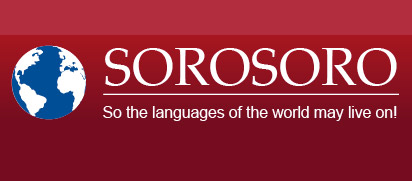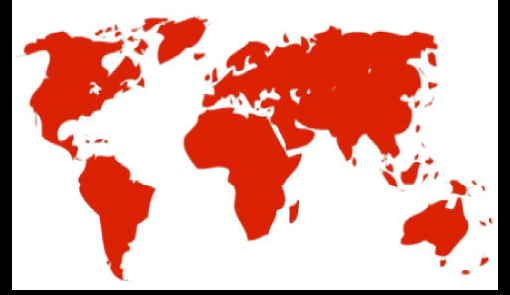Print  |
|


Arawak language family
Where are the Arawak languages spoken?
This family is by far the South Amerindian language family covering the largest geographic area. The Arawak languages are spoken in South and Central America, on a huge territory stretching from Paraguay to Belize and including Bolivia, Peru, Colombia, Brazil, French Guyana, Surinam, Guyana, and Honduras.
In the past, Arawak languages were also spoken all over the Antilles and the Gulf of Mexico islands.
Total number of speakers (estimates)
Between 500,000 and 530,000 according to the figures supplied by Alexandra Y. Aikhenvald (AA, 1999)
Classification
The Arawak language family counts between 53 and 59 active languages at this point, depending on sources. It is the family counting the largest number of languages in South America.
Southern and south-western Arawak subfamily
South Arawak branch
Baure: 55 speakers according to the UNESCO, 5,000 according to AA
Moxo-Ignaciano: 5,000 speakers according to AA
Moxo-Trinitario: 5,000 speakers according to AA
Salumã (alternative name: Enawenê-Nawê): 445 speakers according to the UNESCO, 154 according to AA
Terêna: 19,000 speakers according to the UNESCO, 9,800 according to AA
Pareci-Xingu branch
Xingu
Mehinaku: 200 speakers according to the UNESCO, 95 according to AA
Waura: 321 speakers according to the UNESCO, 130 according to AA
Yawalapiti: 10 speakers according to the UNESCO, 135 according to AA
Pareci-Saraveca
Pareci: 10 speakers according to the UNESCO, 135 according to AA
South-west Arawak branch
Piro (alternative names: Maniteneri, Maxineri): 900 speakers according to the UNESCO, 3,000 according to AA
Chontaquiro (Piro dialect?): no available data
Apurina-Ipurina-Cangitil: 2,000 according to the UNESCO and AA
Iñapari: 600 speakers according to the UNESCO, 362 according to AA
Mashko-Piro (Iñapari dialect?): no available data
Campa branch
Ashaninca: 65,000 speakers according to the UNESCO, 15,000 to 18,000 according to AA
Asheninca: 18,000 to 25,000 according to AA
Caquinte: 250 speakers according to the UNESCO, 200 to 300 according to AA
Machiguenga: 11,000 speakers according to the UNESCO, 7,000 to 12,000 according to AA
Nomatsiguenga: 4,500 speakers according to the UNESCO, 2,500 to 4000 according to AA
Pajonal Campa: 8,000 speakers according to AA
Amuesha (isolate)
Amuesha: 8,000 speakers according to the UNESCO, 6,000 to 8,000 according to AA
Northern Arawak subfamily
Rio Branco branch
Mawayana (alternative name: Mapidian, Mawakwa): 10 speakers according to the UNESCO, nearly extinct according to AA
Wapishana: 11,000 speakers according to the UNESCO, 10,500 according to AA
Palikur branch
Palikur: 1,800 speakers according to the UNESCO, 1,200 according to AA
Caribbean branch
Garifuna (alternative names: Black Carib, Cariff): 116,000 speakers according to the UNESCO, 100,000 according to AA
Ta-Arawak group
Añun-Parauhano: extinct according to the UNESCO, nearly extinct according to AA
Guajiro (alternative name: Wayyuu): 300,000 speakers according to the UNESCO and AA
Arawak (alternative name: Lokono): 2,350 speakers according to the UNESCO, 2,500 according to AA
Northern Amazonian branch
Colombian group
Achagua: 283 speakers according to the UNESCO, 200 according to AA
Cabiyari: 50 speakers according to AA
Piapoco: 3000 speakers according to AA
Yucuna: (alternative name: Chuchuna, Matapi): 600 to 700 speakers according to the UNESCO and AA
Upper Rio Negro group
Baniwa d’Içana (alternative name: Kurripako): 16,000 speakers according to the UNESCO, 3,000 to 4,000 according to AA
Guarequena: 500 speakers according to the UNESCO, 300 according to AA
Tariana: 110 speakers according to the UNESCO, 100(?) according to AA
Orenoque group
Baniwa de Guainia (alternative name: Baniva): 500 speakers according to the UNESCO, 200 (including the Warekana of Xie dialect) according to AA
Bare: 2 speakers according to the UNESCO, nearly extinct according to AA
Mandawaka: nearly extinct according to AA
Moyen Rio Negro group
Kaifana: extinct, according to the UNESCO and AA
Notes on the Arawak languages classification
We hereby follow Alexandra Y. Aikhenvald’s classification (1999).íí
The inner classification of the Arawak languages is under constant debate among linguists and there is no settled classification at this point. Many of these languages lack documentation, and available data is too unsubstantial to build consensus.
As it is often the case with Amerindian languages, the name of a language may actually refer to several languages, and likewise, one and the same language may be known under different names. Plus, depending on sources and the standards by which they distinct a language from a dialect, the number of these languages may vary from 40 to 154.
Are the Arawak languages endangered?
Yes, all the Arawak languages are under more or less critical threats of extinction.
Around 30 of them are said to have disappeared in the course of the 20th Century, or more recently. Kaifana and Mandawaka, for example.
Chances are high that languages like Añun-Paraujano or Chamicuro are also extinct at this point.
Other languages like Bare, Tariana, Cabiyari, Mawayana, Yawalapiti and Baure are threatened with extinction on the very short term, if not already extinct.
The UNESCO considers all the other languages endangered or under threat.
The language sustaining the highest vitality is probably Garifuna, though its future is very uncertain on the long run.
Ethnographic elements
Speakers of the different Arawak languages do not form a culturally homogenous family. Though before colonisation it was possible to make an approximate distinction between the populations of the Caribbean Islands (among which the Taínos, whose language is nowadays extinct) and those who lived in the forested regions of South America.
The Taínos
The Taínos spoke an Arawak language, and most of them lived in the Greater Antilles islands (Cuba, Hispaniola, Porto-Rico…). Some lived on the Lesser Antilles islands.
They were farmers and fishermen. Communities were generally organized around social classes, and the bigger islands like Hispaniola (actual Haiti and Dominican Republic) were split into different kingdoms lead by either male or female caciques. They were in constant conflict with the Caribs, and followed a polytheistic religion centred on the “Cemis”, divinities incarnating natural forces.
The Taínos from Hispaniola were the first Amerindians encountered by C. Columbus, on his first expedition. The arrival of the Spanish colonist meant the end of the Taínos. Slavery, war over resources, and diseases imported from the European continent decimated the population in a very short time. Although the figures are under debate, it is estimated that within 20 years, at the rise of the 16th Century, the Taíno population from Hispaniola was reduced by 90%.
Arawak language speakers from Amazonia
The speakers of Arawak languages from Amazonia follow a very different lifestyle than the early Taínos. They’re usually divided into smaller and more remote communities.
Although they aren’t nomads, their lifestyle does force them to mobility and trade between the different populations of this area has always been significant.
Their history is often marked with long migrations, fusion and fission between groups. Exogamy (the practice of marrying outside one’s community) is common, including between communities who speak very different languages, thus plurilinguism is also common.
Social organization is very diverse. Some communities have one or several leaders and the elder are often regarded as the main figures when it comes to taking political decisions.
Villages are traditionally settled on the river banks, the rivers serving as transport, trade, and communication routes. They often consist in one or several “common houses” made of wooden structures covered by woven palm leaf roofs, usually sheltering several families at once.
The members of these communities are hunters/fishermen (men) and farmers (usually women). They practise slash and burn, and their agriculture is often based on tubers such as manioc, yam, and sweet potato.
The remotest populations or the ones settled far enough from coasts and cities were kept relatively safe from colonisation for a long time. But with the 20th Century came the logging and mining industries (especially for gold), river pollution and urban development, missionaries and evangelists, which all contributed to perturb the traditional lifestyle of Amazonian native populations. All these cultures are threatened with extinction nowadays.
Speakers of Garifuna
The Garinagu, speakers of Garifuna, form a whole different cultural model.
They descend from an encounter between the Caribbean Amerindians (Taínos and Caribs) and the African slaves brought on the Islands’ farms. According to the official version, this encounter occurred after a slave ship crashed on Saint Vincent Island at the beginning of the 17th Century. Survivors among the slaves escaped and eventually blended with the Amerindians. Chased off their island by the English, they now live along the Caribbean coasts of Nicaragua, Honduras, and Belize.
Although recognized as an Arawak language, Garifuna is deeply marked by its history and bears the traces of its various influences: Carib languages, English, and English based Creole from Belize. Most speakers of Garifuna are bilingual or trilingual.
National Garifuna Council of Belize official website:
http://ngcbelize.org/content/view/3/1/
Sources
Aikhenvald, A.Y. (1999) “Arawak” in R.M.W. Dixon and Alexandra Y. Aikhenvald, (eds) The Amazonian languages, Cambridge University Press.
Please do not hesitate to contact us should you have more information on this language: contact@sorosoro.org
Fact sheets available for languages in this family :








